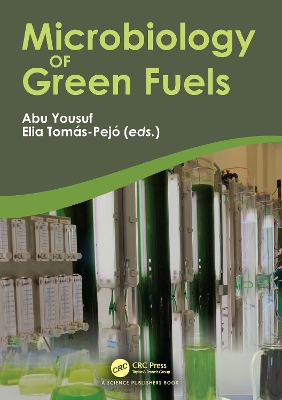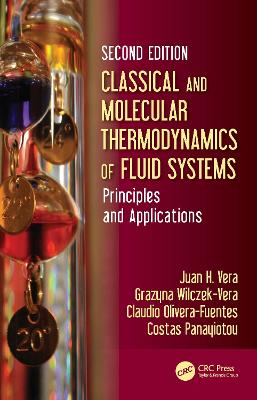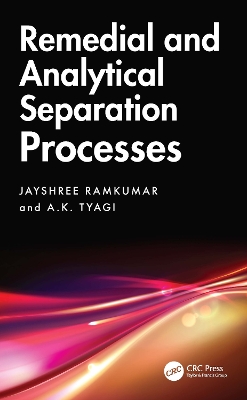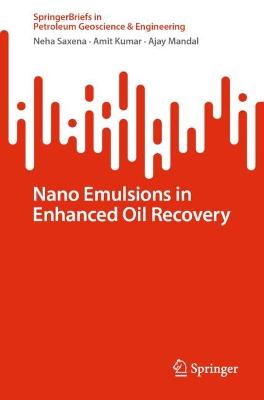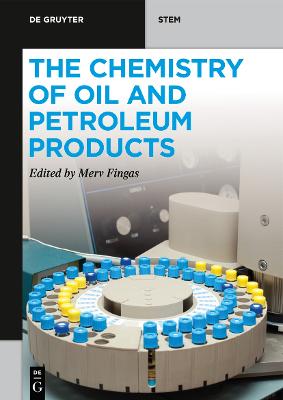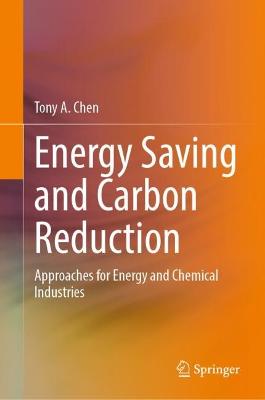Petroleum Refining Design and Applications Handbook, Volume 3
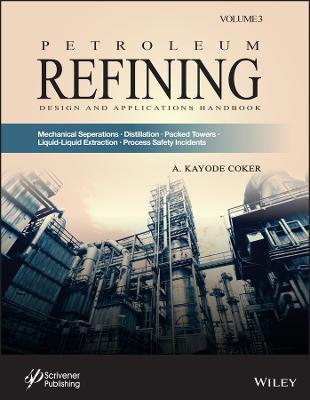 -15%
portes grátis
-15%
portes grátis
Petroleum Refining Design and Applications Handbook, Volume 3
Mechanical Separations, Distillation, Packed Towers, Liquid-Liquid Extraction, Process Safety Incidents
Coker, A. Kayode
John Wiley & Sons Inc
09/2022
1216
Dura
Inglês
9781119794868
15 a 20 dias
2794
Descrição não disponível.
Preface xxii
Acknowledgments xxiv
18 Mechanical Separations 1
18.1 Particle Size 1
18.2 Preliminary Separator Selection 6
18.3 Gravity Settlers 16
18.4 Terminal Velocity 19
18.5 Alternate Terminal Velocity Calculation 24
18.6 American Petroleum Institute's Oil Field Separators 28
18.7 Liquid/Liquid, Liquid/Solid Gravity Separations, Decanters, and Sedimentation Equipment 28
18.8 Horizontal Gravity Settlers or Decanters, Liquid/Liquid 29
18.9 Modified Method of Happel and Jordan 33
18.10 Decanter 36
18.11 Impingement Separators 42
18.12 Centrifugal Separators 68
References 246
19 Distillation 249
19.1 Distillation Process Performance 249
19.2 Equilibrium Basic Considerations 252
19.3 Vapor-Liquid Equilibria 253
19.4 Activity Coefficients 262
19.5 Excess Gibbs Energy-GE 263
19.6 K-Value 264
19.7 Ideal Systems 266
19.8 Henry's Law 268
19.9 K-Factor Hydrocarbon Equilibrium Charts 269
19.10 Non-Ideal Systems 277
19.11 Thermodynamic Simulation Software Programs 280
19.12 Vapor Pressure 283
19.13 Azeotropic Mixtures 296
19.14 Bubble Point of Liquid Mixture 311
19.15 Equilibrium Flash Computations 316
19.16 Degrees of Freedom 325
19.17 UniSim (Honeywell) Software 326
19.18 Binary System Material Balance: Constant Molal Overflow Tray to Tray 333
19.19 Determination of Distillation Operating Pressures 343
19.20 Condenser Types From a Distillation Column 344
19.21 Effect of Thermal Condition of Feed 348
19.22 Effect of Total Reflux, Minimum Number of Plates in a Distillation Column 352
19.23 Relative Volatility ? Separating Factor in a Vapor-Liquid System 355
19.24 Rapid Estimation of Relative Volatility 366
19.25 Estimation of Relative Volatilities Under 1.25 (? < 125) by Ryan 367
19.26 Estimation of Minimum Reflux Ratio: Infinite Plates 368
19.27 Calculation of Number of Theoretical Trays at Actual Reflux 370
19.28 Identification of "Pinch Conditions" on an x-y Diagram at High Pressure 373
19.29 Distillation Column Design 376
19.30 Simulation of a Fractionating Column 378
19.31 Determination of Number of Theoretical Plates in Fractionating Columns by the Smoker Equations at Constant Relative Volatility (? = constant) 396
19.32 The Jafarey, Douglas, and McAvoy Equation: Design and Control 401
19.33 Number of Theoretical Trays at Actual Reflux 411
19.34 Estimating Tray Efficiency in a Distillation Column 413
19.35 Steam Distillation 422
19.36 Distillation with Heat Balance of Component Mixture 432
19.37 Multicomponent Distillation 453
19.38 Scheibel-Montross Empirical: Adjacent Key Systems: Constant or Variable Volatility 494
19.39 Minimum Number of Trays: Total Reflux?Constant Volatility 497
19.40 Smith-Brinkley (SB) Method 512
19.41 Retrofit Design of Distillation Columns 514
19.42 Tray-by-Tray for Multicomponent Mixtures 517
19.43 Tray-by-Tray Calculation of a Multicomponent Mixture Using a Digital Computer 531
19.44 Thermal Condition of Feed 532
19.45 Minimum Reflux-Underwood Method, Determination of ?Avg for Multicomponent Mixture 533
19.46 Heat Balance-Adjacent Key Systems with Sharp Separations, Constant Molal Overflow 539
19.47 Stripping Volatile Organic Chemicals (VOC) from Water with Air 542
19.48 Rigorous Plate-to-Plate Calculation (Sorel Method) 547
19.49 Multiple Feeds and Side Streams for a Binary Mixture 551
19.50 Chou and Yaws Method 558
19.51 Optimum Reflux Ratio and Optimum Number of Trays Calculations 561
19.52 Tower Sizing for Valve Trays 574
19.53 Troubleshooting, Predictive Maintenance, and Controls for Distillation Columns 589
19.54 Distillation Sequencing with Columns Having More than Two Products 622
19.55 Heat Integration of Distillation Columns 630
19.56 Capital Cost Considerations for Distillation Columns 634
19.57 The Pinch Design Approach to Inventing a Network 644
19.58 Appropriate Placement and Integration of Distillation Columns 644
19.59 Heat Integration of Distillation Columns: Summary 645
19.60 Common Installation Errors in Distillation Columns 645
References 693
Bibliography 699
20 Packed Towers and Liquid-Liquid Extraction 703
20.1 Shell 707
20.2 Random Packing 708
20.3 Packing Supports 709
20.4 Liquid Distribution 734
20.5 Packing Installation 739
20.6 Contacting Efficiency, Expressed as Kga, HTU, HETP 755
20.7 Packing Size 756
20.8 Pressure Drop 757
20.9 Materials of Construction 759
20.10 Particle versus Compact Preformed Structured Packings 759
20.11 Minimum Liquid Wetting Rates 760
20.12 Loading Point Loading Region 761
20.13 Flooding Point 772
20.14 Foaming Liquid Systems 773
20.15 Surface Tension Effects 773
20.16 Packing Factors 773
20.17 Recommended Design Capacity and Pressure Drop 776
20.18 Pressure Drop Design Criteria and Guide: Random Packings Only 778
20.19 Effects of Physical Properties 781
20.20 Performance Comparisons 784
20.21 Capacity Basis for Design 784
20.22 Proprietary Random Packing Design Guides 796
20.23 Liquid Hold-Up 822
20.24 Packing Wetted Area 824
20.25 Effective Interfacial Area 826
20.26 Entrainment from Packing Surface 827
20.27 Structured Packing 830
20.28 Structured Packing: Technical Performance Features 849
20.29 New Generalized Pressure Drop Correlation Charts 855
20.30 Mass and Heat Transfer in Packed Tower 855
20.31 Number of Transfer Units, NOG, NOL 856
20.32 Gas and Liquid-Phase Coefficients, kG and kL 868
20.33 Height of a Transfer Unit, HOG, HOL, HTU 869
20.34 Distillation in Packed Towers 874
20.35 Liquid-Liquid Extraction 893
20.36 Process Parameters 908
20.37 Solvents Selection for the Extraction Unit 911
20.38 Phenol Extraction Process of Lubes 913
20.39 Furfural Extraction Process 914
20.40 Dispersed-Phase Droplet Size 916
20.41 Theory 920
20.42 Nernst's Distribution Law 921
20.43 Tie Lines 921
20.44 Phase Diagrams 929
20.45 Countercurrent Extractors 931
20.46 Extraction Equipment 935
References 956
Glossary 961
Appendix D 1087
Appendix F 1163
About the Author 1179
Index 1181
Acknowledgments xxiv
18 Mechanical Separations 1
18.1 Particle Size 1
18.2 Preliminary Separator Selection 6
18.3 Gravity Settlers 16
18.4 Terminal Velocity 19
18.5 Alternate Terminal Velocity Calculation 24
18.6 American Petroleum Institute's Oil Field Separators 28
18.7 Liquid/Liquid, Liquid/Solid Gravity Separations, Decanters, and Sedimentation Equipment 28
18.8 Horizontal Gravity Settlers or Decanters, Liquid/Liquid 29
18.9 Modified Method of Happel and Jordan 33
18.10 Decanter 36
18.11 Impingement Separators 42
18.12 Centrifugal Separators 68
References 246
19 Distillation 249
19.1 Distillation Process Performance 249
19.2 Equilibrium Basic Considerations 252
19.3 Vapor-Liquid Equilibria 253
19.4 Activity Coefficients 262
19.5 Excess Gibbs Energy-GE 263
19.6 K-Value 264
19.7 Ideal Systems 266
19.8 Henry's Law 268
19.9 K-Factor Hydrocarbon Equilibrium Charts 269
19.10 Non-Ideal Systems 277
19.11 Thermodynamic Simulation Software Programs 280
19.12 Vapor Pressure 283
19.13 Azeotropic Mixtures 296
19.14 Bubble Point of Liquid Mixture 311
19.15 Equilibrium Flash Computations 316
19.16 Degrees of Freedom 325
19.17 UniSim (Honeywell) Software 326
19.18 Binary System Material Balance: Constant Molal Overflow Tray to Tray 333
19.19 Determination of Distillation Operating Pressures 343
19.20 Condenser Types From a Distillation Column 344
19.21 Effect of Thermal Condition of Feed 348
19.22 Effect of Total Reflux, Minimum Number of Plates in a Distillation Column 352
19.23 Relative Volatility ? Separating Factor in a Vapor-Liquid System 355
19.24 Rapid Estimation of Relative Volatility 366
19.25 Estimation of Relative Volatilities Under 1.25 (? < 125) by Ryan 367
19.26 Estimation of Minimum Reflux Ratio: Infinite Plates 368
19.27 Calculation of Number of Theoretical Trays at Actual Reflux 370
19.28 Identification of "Pinch Conditions" on an x-y Diagram at High Pressure 373
19.29 Distillation Column Design 376
19.30 Simulation of a Fractionating Column 378
19.31 Determination of Number of Theoretical Plates in Fractionating Columns by the Smoker Equations at Constant Relative Volatility (? = constant) 396
19.32 The Jafarey, Douglas, and McAvoy Equation: Design and Control 401
19.33 Number of Theoretical Trays at Actual Reflux 411
19.34 Estimating Tray Efficiency in a Distillation Column 413
19.35 Steam Distillation 422
19.36 Distillation with Heat Balance of Component Mixture 432
19.37 Multicomponent Distillation 453
19.38 Scheibel-Montross Empirical: Adjacent Key Systems: Constant or Variable Volatility 494
19.39 Minimum Number of Trays: Total Reflux?Constant Volatility 497
19.40 Smith-Brinkley (SB) Method 512
19.41 Retrofit Design of Distillation Columns 514
19.42 Tray-by-Tray for Multicomponent Mixtures 517
19.43 Tray-by-Tray Calculation of a Multicomponent Mixture Using a Digital Computer 531
19.44 Thermal Condition of Feed 532
19.45 Minimum Reflux-Underwood Method, Determination of ?Avg for Multicomponent Mixture 533
19.46 Heat Balance-Adjacent Key Systems with Sharp Separations, Constant Molal Overflow 539
19.47 Stripping Volatile Organic Chemicals (VOC) from Water with Air 542
19.48 Rigorous Plate-to-Plate Calculation (Sorel Method) 547
19.49 Multiple Feeds and Side Streams for a Binary Mixture 551
19.50 Chou and Yaws Method 558
19.51 Optimum Reflux Ratio and Optimum Number of Trays Calculations 561
19.52 Tower Sizing for Valve Trays 574
19.53 Troubleshooting, Predictive Maintenance, and Controls for Distillation Columns 589
19.54 Distillation Sequencing with Columns Having More than Two Products 622
19.55 Heat Integration of Distillation Columns 630
19.56 Capital Cost Considerations for Distillation Columns 634
19.57 The Pinch Design Approach to Inventing a Network 644
19.58 Appropriate Placement and Integration of Distillation Columns 644
19.59 Heat Integration of Distillation Columns: Summary 645
19.60 Common Installation Errors in Distillation Columns 645
References 693
Bibliography 699
20 Packed Towers and Liquid-Liquid Extraction 703
20.1 Shell 707
20.2 Random Packing 708
20.3 Packing Supports 709
20.4 Liquid Distribution 734
20.5 Packing Installation 739
20.6 Contacting Efficiency, Expressed as Kga, HTU, HETP 755
20.7 Packing Size 756
20.8 Pressure Drop 757
20.9 Materials of Construction 759
20.10 Particle versus Compact Preformed Structured Packings 759
20.11 Minimum Liquid Wetting Rates 760
20.12 Loading Point Loading Region 761
20.13 Flooding Point 772
20.14 Foaming Liquid Systems 773
20.15 Surface Tension Effects 773
20.16 Packing Factors 773
20.17 Recommended Design Capacity and Pressure Drop 776
20.18 Pressure Drop Design Criteria and Guide: Random Packings Only 778
20.19 Effects of Physical Properties 781
20.20 Performance Comparisons 784
20.21 Capacity Basis for Design 784
20.22 Proprietary Random Packing Design Guides 796
20.23 Liquid Hold-Up 822
20.24 Packing Wetted Area 824
20.25 Effective Interfacial Area 826
20.26 Entrainment from Packing Surface 827
20.27 Structured Packing 830
20.28 Structured Packing: Technical Performance Features 849
20.29 New Generalized Pressure Drop Correlation Charts 855
20.30 Mass and Heat Transfer in Packed Tower 855
20.31 Number of Transfer Units, NOG, NOL 856
20.32 Gas and Liquid-Phase Coefficients, kG and kL 868
20.33 Height of a Transfer Unit, HOG, HOL, HTU 869
20.34 Distillation in Packed Towers 874
20.35 Liquid-Liquid Extraction 893
20.36 Process Parameters 908
20.37 Solvents Selection for the Extraction Unit 911
20.38 Phenol Extraction Process of Lubes 913
20.39 Furfural Extraction Process 914
20.40 Dispersed-Phase Droplet Size 916
20.41 Theory 920
20.42 Nernst's Distribution Law 921
20.43 Tie Lines 921
20.44 Phase Diagrams 929
20.45 Countercurrent Extractors 931
20.46 Extraction Equipment 935
References 956
Glossary 961
Appendix D 1087
Appendix F 1163
About the Author 1179
Index 1181
Este título pertence ao(s) assunto(s) indicados(s). Para ver outros títulos clique no assunto desejado.
Mechanical separation; Distillation, Dividing wall column; Tower sizing; Distillation sequencing; Heat Integration of Distillation Columns; Packed tower; Liquid-liquid Extraction; Troubleshooting; Controls for Distillation Columns; Rules of Thumb; Flowsheet design; Fluid Flow; Oil System Piping; Pressure drop for Incompressible fluids; Compressible fluids; Two-phase flow; Panhandle Gas Flow Formula; UniSim Design PIPESYS; Pumps; Compressors; Mechanical separation; Distillation; Tower sizing; Distillation sequencing; Heat Integration of Distillation Columns; Packed tower; Liquid-liquid Extraction; Troubleshooting; Controls for Distillation Columns
Preface xxii
Acknowledgments xxiv
18 Mechanical Separations 1
18.1 Particle Size 1
18.2 Preliminary Separator Selection 6
18.3 Gravity Settlers 16
18.4 Terminal Velocity 19
18.5 Alternate Terminal Velocity Calculation 24
18.6 American Petroleum Institute's Oil Field Separators 28
18.7 Liquid/Liquid, Liquid/Solid Gravity Separations, Decanters, and Sedimentation Equipment 28
18.8 Horizontal Gravity Settlers or Decanters, Liquid/Liquid 29
18.9 Modified Method of Happel and Jordan 33
18.10 Decanter 36
18.11 Impingement Separators 42
18.12 Centrifugal Separators 68
References 246
19 Distillation 249
19.1 Distillation Process Performance 249
19.2 Equilibrium Basic Considerations 252
19.3 Vapor-Liquid Equilibria 253
19.4 Activity Coefficients 262
19.5 Excess Gibbs Energy-GE 263
19.6 K-Value 264
19.7 Ideal Systems 266
19.8 Henry's Law 268
19.9 K-Factor Hydrocarbon Equilibrium Charts 269
19.10 Non-Ideal Systems 277
19.11 Thermodynamic Simulation Software Programs 280
19.12 Vapor Pressure 283
19.13 Azeotropic Mixtures 296
19.14 Bubble Point of Liquid Mixture 311
19.15 Equilibrium Flash Computations 316
19.16 Degrees of Freedom 325
19.17 UniSim (Honeywell) Software 326
19.18 Binary System Material Balance: Constant Molal Overflow Tray to Tray 333
19.19 Determination of Distillation Operating Pressures 343
19.20 Condenser Types From a Distillation Column 344
19.21 Effect of Thermal Condition of Feed 348
19.22 Effect of Total Reflux, Minimum Number of Plates in a Distillation Column 352
19.23 Relative Volatility ? Separating Factor in a Vapor-Liquid System 355
19.24 Rapid Estimation of Relative Volatility 366
19.25 Estimation of Relative Volatilities Under 1.25 (? < 125) by Ryan 367
19.26 Estimation of Minimum Reflux Ratio: Infinite Plates 368
19.27 Calculation of Number of Theoretical Trays at Actual Reflux 370
19.28 Identification of "Pinch Conditions" on an x-y Diagram at High Pressure 373
19.29 Distillation Column Design 376
19.30 Simulation of a Fractionating Column 378
19.31 Determination of Number of Theoretical Plates in Fractionating Columns by the Smoker Equations at Constant Relative Volatility (? = constant) 396
19.32 The Jafarey, Douglas, and McAvoy Equation: Design and Control 401
19.33 Number of Theoretical Trays at Actual Reflux 411
19.34 Estimating Tray Efficiency in a Distillation Column 413
19.35 Steam Distillation 422
19.36 Distillation with Heat Balance of Component Mixture 432
19.37 Multicomponent Distillation 453
19.38 Scheibel-Montross Empirical: Adjacent Key Systems: Constant or Variable Volatility 494
19.39 Minimum Number of Trays: Total Reflux?Constant Volatility 497
19.40 Smith-Brinkley (SB) Method 512
19.41 Retrofit Design of Distillation Columns 514
19.42 Tray-by-Tray for Multicomponent Mixtures 517
19.43 Tray-by-Tray Calculation of a Multicomponent Mixture Using a Digital Computer 531
19.44 Thermal Condition of Feed 532
19.45 Minimum Reflux-Underwood Method, Determination of ?Avg for Multicomponent Mixture 533
19.46 Heat Balance-Adjacent Key Systems with Sharp Separations, Constant Molal Overflow 539
19.47 Stripping Volatile Organic Chemicals (VOC) from Water with Air 542
19.48 Rigorous Plate-to-Plate Calculation (Sorel Method) 547
19.49 Multiple Feeds and Side Streams for a Binary Mixture 551
19.50 Chou and Yaws Method 558
19.51 Optimum Reflux Ratio and Optimum Number of Trays Calculations 561
19.52 Tower Sizing for Valve Trays 574
19.53 Troubleshooting, Predictive Maintenance, and Controls for Distillation Columns 589
19.54 Distillation Sequencing with Columns Having More than Two Products 622
19.55 Heat Integration of Distillation Columns 630
19.56 Capital Cost Considerations for Distillation Columns 634
19.57 The Pinch Design Approach to Inventing a Network 644
19.58 Appropriate Placement and Integration of Distillation Columns 644
19.59 Heat Integration of Distillation Columns: Summary 645
19.60 Common Installation Errors in Distillation Columns 645
References 693
Bibliography 699
20 Packed Towers and Liquid-Liquid Extraction 703
20.1 Shell 707
20.2 Random Packing 708
20.3 Packing Supports 709
20.4 Liquid Distribution 734
20.5 Packing Installation 739
20.6 Contacting Efficiency, Expressed as Kga, HTU, HETP 755
20.7 Packing Size 756
20.8 Pressure Drop 757
20.9 Materials of Construction 759
20.10 Particle versus Compact Preformed Structured Packings 759
20.11 Minimum Liquid Wetting Rates 760
20.12 Loading Point Loading Region 761
20.13 Flooding Point 772
20.14 Foaming Liquid Systems 773
20.15 Surface Tension Effects 773
20.16 Packing Factors 773
20.17 Recommended Design Capacity and Pressure Drop 776
20.18 Pressure Drop Design Criteria and Guide: Random Packings Only 778
20.19 Effects of Physical Properties 781
20.20 Performance Comparisons 784
20.21 Capacity Basis for Design 784
20.22 Proprietary Random Packing Design Guides 796
20.23 Liquid Hold-Up 822
20.24 Packing Wetted Area 824
20.25 Effective Interfacial Area 826
20.26 Entrainment from Packing Surface 827
20.27 Structured Packing 830
20.28 Structured Packing: Technical Performance Features 849
20.29 New Generalized Pressure Drop Correlation Charts 855
20.30 Mass and Heat Transfer in Packed Tower 855
20.31 Number of Transfer Units, NOG, NOL 856
20.32 Gas and Liquid-Phase Coefficients, kG and kL 868
20.33 Height of a Transfer Unit, HOG, HOL, HTU 869
20.34 Distillation in Packed Towers 874
20.35 Liquid-Liquid Extraction 893
20.36 Process Parameters 908
20.37 Solvents Selection for the Extraction Unit 911
20.38 Phenol Extraction Process of Lubes 913
20.39 Furfural Extraction Process 914
20.40 Dispersed-Phase Droplet Size 916
20.41 Theory 920
20.42 Nernst's Distribution Law 921
20.43 Tie Lines 921
20.44 Phase Diagrams 929
20.45 Countercurrent Extractors 931
20.46 Extraction Equipment 935
References 956
Glossary 961
Appendix D 1087
Appendix F 1163
About the Author 1179
Index 1181
Acknowledgments xxiv
18 Mechanical Separations 1
18.1 Particle Size 1
18.2 Preliminary Separator Selection 6
18.3 Gravity Settlers 16
18.4 Terminal Velocity 19
18.5 Alternate Terminal Velocity Calculation 24
18.6 American Petroleum Institute's Oil Field Separators 28
18.7 Liquid/Liquid, Liquid/Solid Gravity Separations, Decanters, and Sedimentation Equipment 28
18.8 Horizontal Gravity Settlers or Decanters, Liquid/Liquid 29
18.9 Modified Method of Happel and Jordan 33
18.10 Decanter 36
18.11 Impingement Separators 42
18.12 Centrifugal Separators 68
References 246
19 Distillation 249
19.1 Distillation Process Performance 249
19.2 Equilibrium Basic Considerations 252
19.3 Vapor-Liquid Equilibria 253
19.4 Activity Coefficients 262
19.5 Excess Gibbs Energy-GE 263
19.6 K-Value 264
19.7 Ideal Systems 266
19.8 Henry's Law 268
19.9 K-Factor Hydrocarbon Equilibrium Charts 269
19.10 Non-Ideal Systems 277
19.11 Thermodynamic Simulation Software Programs 280
19.12 Vapor Pressure 283
19.13 Azeotropic Mixtures 296
19.14 Bubble Point of Liquid Mixture 311
19.15 Equilibrium Flash Computations 316
19.16 Degrees of Freedom 325
19.17 UniSim (Honeywell) Software 326
19.18 Binary System Material Balance: Constant Molal Overflow Tray to Tray 333
19.19 Determination of Distillation Operating Pressures 343
19.20 Condenser Types From a Distillation Column 344
19.21 Effect of Thermal Condition of Feed 348
19.22 Effect of Total Reflux, Minimum Number of Plates in a Distillation Column 352
19.23 Relative Volatility ? Separating Factor in a Vapor-Liquid System 355
19.24 Rapid Estimation of Relative Volatility 366
19.25 Estimation of Relative Volatilities Under 1.25 (? < 125) by Ryan 367
19.26 Estimation of Minimum Reflux Ratio: Infinite Plates 368
19.27 Calculation of Number of Theoretical Trays at Actual Reflux 370
19.28 Identification of "Pinch Conditions" on an x-y Diagram at High Pressure 373
19.29 Distillation Column Design 376
19.30 Simulation of a Fractionating Column 378
19.31 Determination of Number of Theoretical Plates in Fractionating Columns by the Smoker Equations at Constant Relative Volatility (? = constant) 396
19.32 The Jafarey, Douglas, and McAvoy Equation: Design and Control 401
19.33 Number of Theoretical Trays at Actual Reflux 411
19.34 Estimating Tray Efficiency in a Distillation Column 413
19.35 Steam Distillation 422
19.36 Distillation with Heat Balance of Component Mixture 432
19.37 Multicomponent Distillation 453
19.38 Scheibel-Montross Empirical: Adjacent Key Systems: Constant or Variable Volatility 494
19.39 Minimum Number of Trays: Total Reflux?Constant Volatility 497
19.40 Smith-Brinkley (SB) Method 512
19.41 Retrofit Design of Distillation Columns 514
19.42 Tray-by-Tray for Multicomponent Mixtures 517
19.43 Tray-by-Tray Calculation of a Multicomponent Mixture Using a Digital Computer 531
19.44 Thermal Condition of Feed 532
19.45 Minimum Reflux-Underwood Method, Determination of ?Avg for Multicomponent Mixture 533
19.46 Heat Balance-Adjacent Key Systems with Sharp Separations, Constant Molal Overflow 539
19.47 Stripping Volatile Organic Chemicals (VOC) from Water with Air 542
19.48 Rigorous Plate-to-Plate Calculation (Sorel Method) 547
19.49 Multiple Feeds and Side Streams for a Binary Mixture 551
19.50 Chou and Yaws Method 558
19.51 Optimum Reflux Ratio and Optimum Number of Trays Calculations 561
19.52 Tower Sizing for Valve Trays 574
19.53 Troubleshooting, Predictive Maintenance, and Controls for Distillation Columns 589
19.54 Distillation Sequencing with Columns Having More than Two Products 622
19.55 Heat Integration of Distillation Columns 630
19.56 Capital Cost Considerations for Distillation Columns 634
19.57 The Pinch Design Approach to Inventing a Network 644
19.58 Appropriate Placement and Integration of Distillation Columns 644
19.59 Heat Integration of Distillation Columns: Summary 645
19.60 Common Installation Errors in Distillation Columns 645
References 693
Bibliography 699
20 Packed Towers and Liquid-Liquid Extraction 703
20.1 Shell 707
20.2 Random Packing 708
20.3 Packing Supports 709
20.4 Liquid Distribution 734
20.5 Packing Installation 739
20.6 Contacting Efficiency, Expressed as Kga, HTU, HETP 755
20.7 Packing Size 756
20.8 Pressure Drop 757
20.9 Materials of Construction 759
20.10 Particle versus Compact Preformed Structured Packings 759
20.11 Minimum Liquid Wetting Rates 760
20.12 Loading Point Loading Region 761
20.13 Flooding Point 772
20.14 Foaming Liquid Systems 773
20.15 Surface Tension Effects 773
20.16 Packing Factors 773
20.17 Recommended Design Capacity and Pressure Drop 776
20.18 Pressure Drop Design Criteria and Guide: Random Packings Only 778
20.19 Effects of Physical Properties 781
20.20 Performance Comparisons 784
20.21 Capacity Basis for Design 784
20.22 Proprietary Random Packing Design Guides 796
20.23 Liquid Hold-Up 822
20.24 Packing Wetted Area 824
20.25 Effective Interfacial Area 826
20.26 Entrainment from Packing Surface 827
20.27 Structured Packing 830
20.28 Structured Packing: Technical Performance Features 849
20.29 New Generalized Pressure Drop Correlation Charts 855
20.30 Mass and Heat Transfer in Packed Tower 855
20.31 Number of Transfer Units, NOG, NOL 856
20.32 Gas and Liquid-Phase Coefficients, kG and kL 868
20.33 Height of a Transfer Unit, HOG, HOL, HTU 869
20.34 Distillation in Packed Towers 874
20.35 Liquid-Liquid Extraction 893
20.36 Process Parameters 908
20.37 Solvents Selection for the Extraction Unit 911
20.38 Phenol Extraction Process of Lubes 913
20.39 Furfural Extraction Process 914
20.40 Dispersed-Phase Droplet Size 916
20.41 Theory 920
20.42 Nernst's Distribution Law 921
20.43 Tie Lines 921
20.44 Phase Diagrams 929
20.45 Countercurrent Extractors 931
20.46 Extraction Equipment 935
References 956
Glossary 961
Appendix D 1087
Appendix F 1163
About the Author 1179
Index 1181
Este título pertence ao(s) assunto(s) indicados(s). Para ver outros títulos clique no assunto desejado.
Mechanical separation; Distillation, Dividing wall column; Tower sizing; Distillation sequencing; Heat Integration of Distillation Columns; Packed tower; Liquid-liquid Extraction; Troubleshooting; Controls for Distillation Columns; Rules of Thumb; Flowsheet design; Fluid Flow; Oil System Piping; Pressure drop for Incompressible fluids; Compressible fluids; Two-phase flow; Panhandle Gas Flow Formula; UniSim Design PIPESYS; Pumps; Compressors; Mechanical separation; Distillation; Tower sizing; Distillation sequencing; Heat Integration of Distillation Columns; Packed tower; Liquid-liquid Extraction; Troubleshooting; Controls for Distillation Columns

